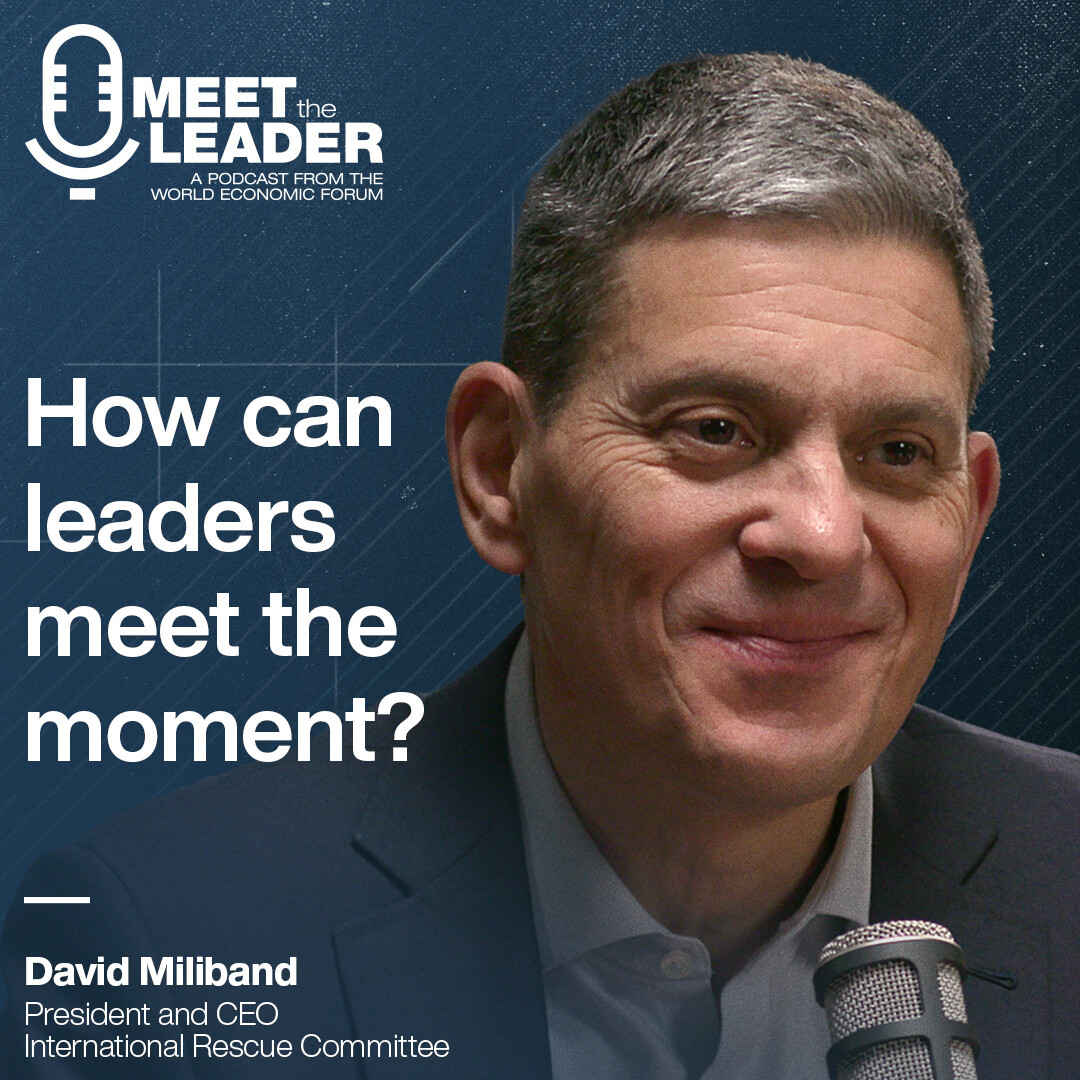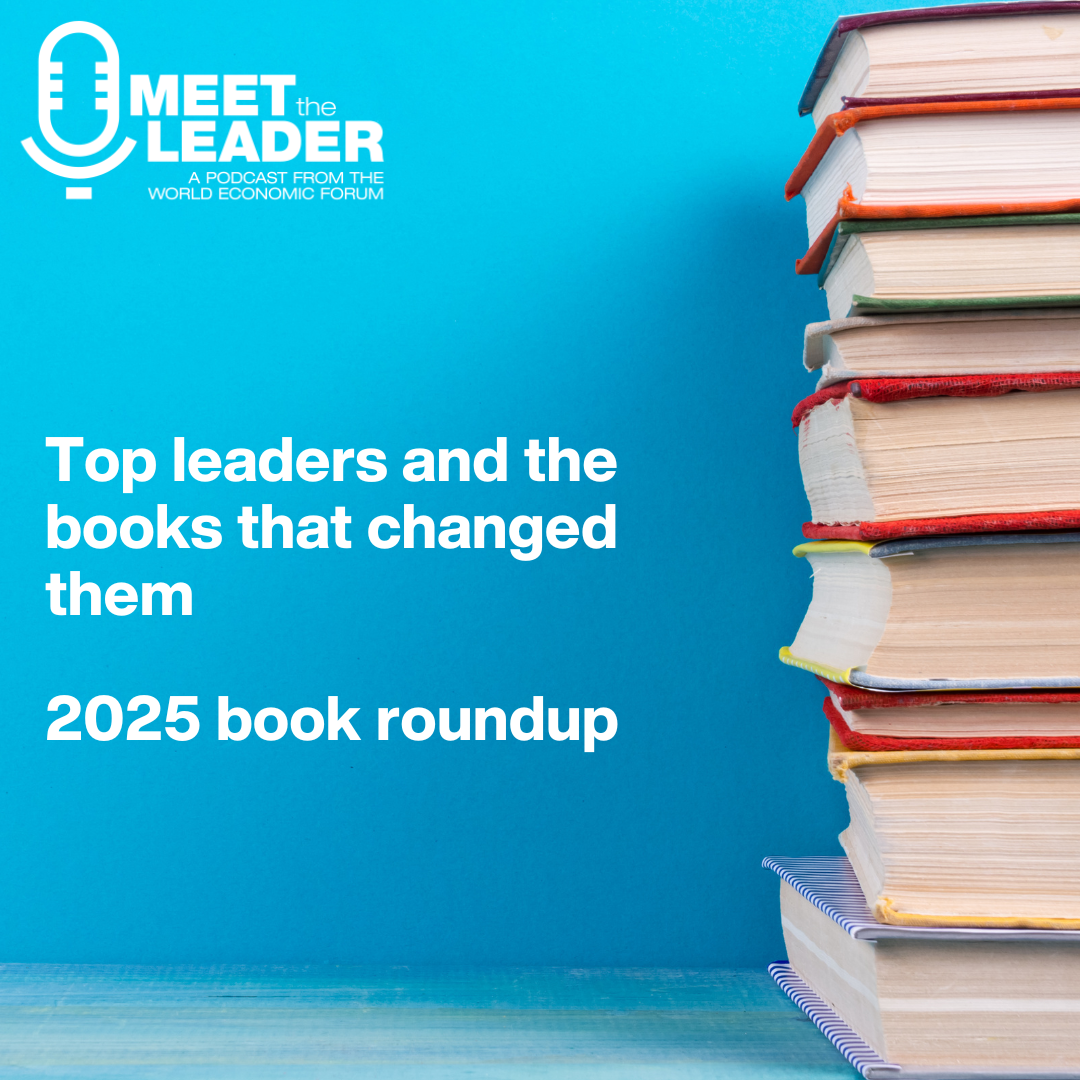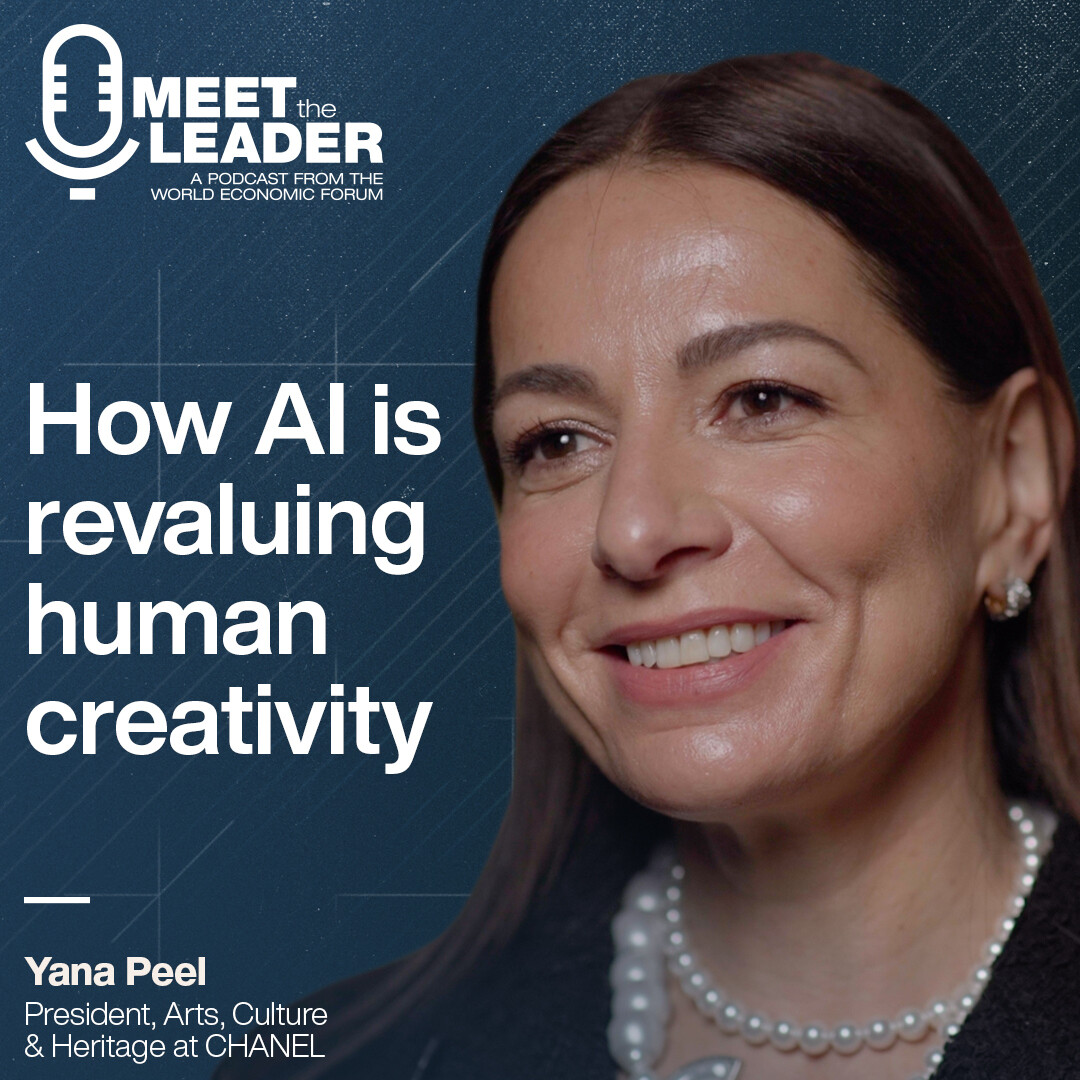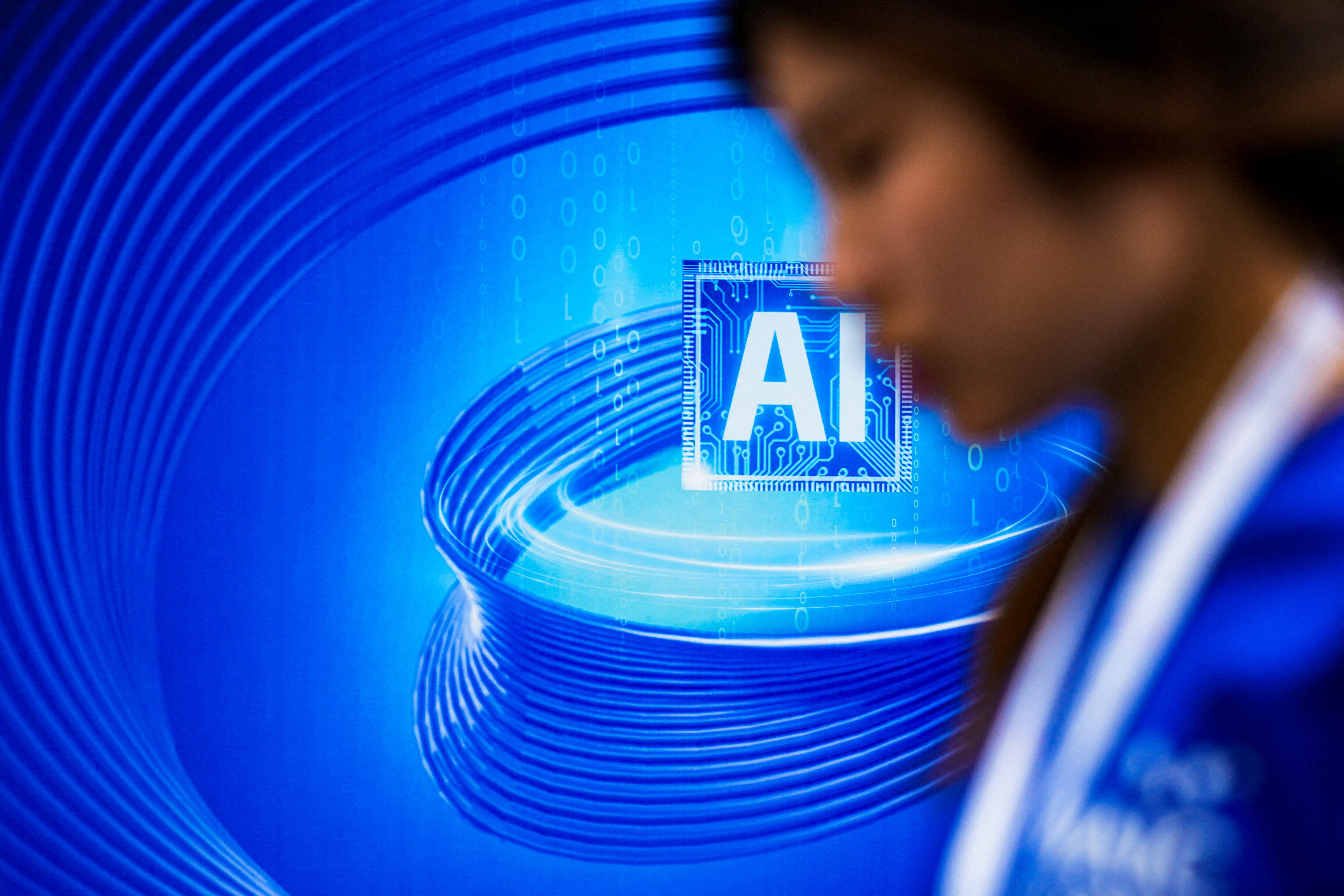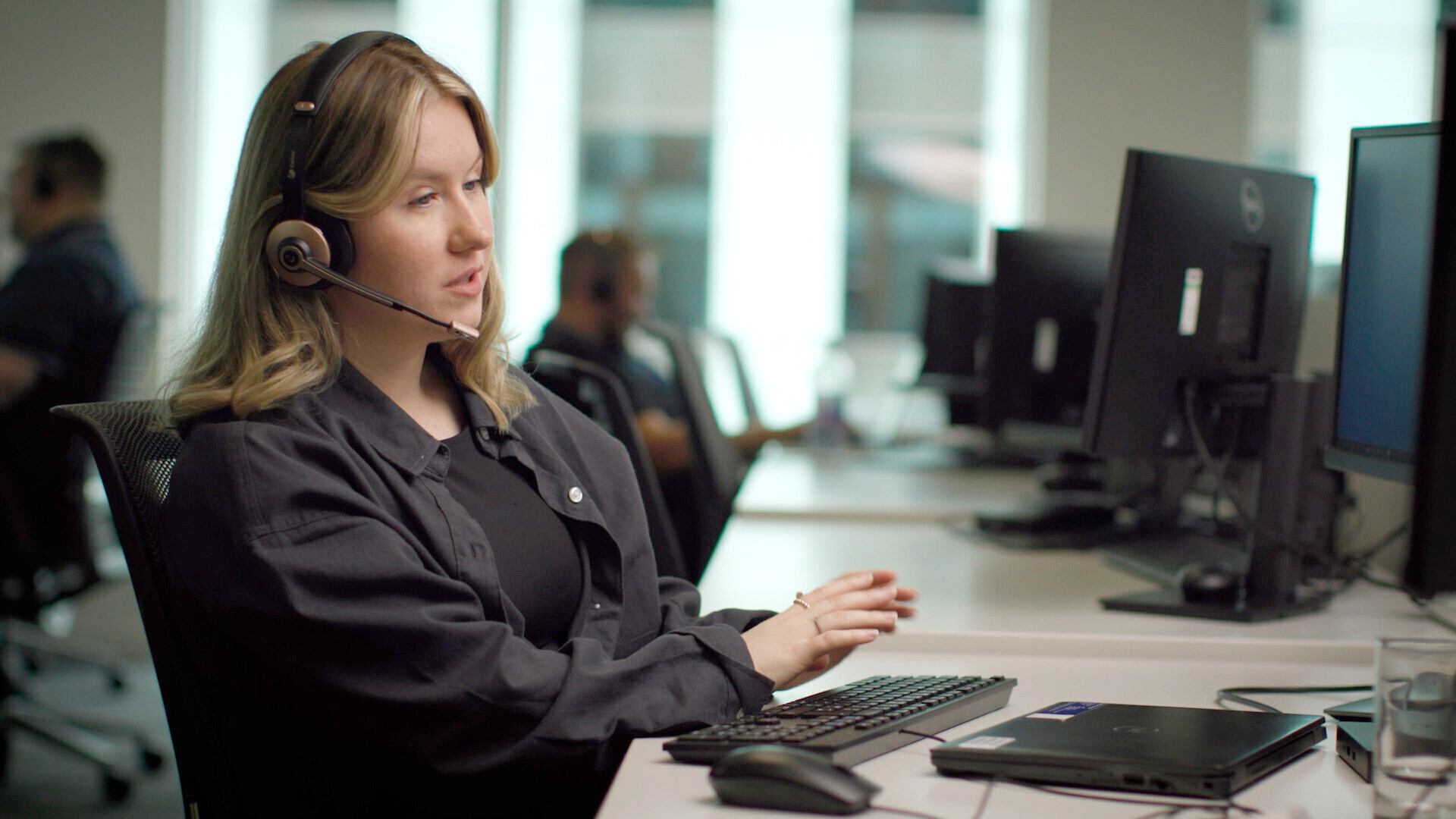We’re ‘losing the war’ on modern slavery: What leaders can do - HPE’s John Schultz
播客文字稿
John Schultz, Hewlett Packard Enterprise: Depending on what figures you look at, there are more slaves in the world today than any other point in time in history. The U.N. set down the challenge some five years ago to eradicate slavery by 2030. The numbers are going in a different direction. We are losing the war right now.
So often when we have these conversations with folks, the first thing they say is:" There's slavery in the world? I thought that ended in the 1800s."
A lot of the type of slavery we see today, you know, whether that's sex trafficking or whether it's someone working in a nail salon or whether it's someone who's had to pay a recruitment fee and is sitting in a lovely factory somewhere, you know, in the world. But they're really not free to come and go because they're working off this this debt. You know, they don't look like the classic version of slavery.
But when you get to understand the circumstances of these folks, you're like, "That absolutely is forced labor" or "that absolutely is slavery and we have to put an end to it."
Linda Lacina, Meet the Leader: Welcome to Meet the Leader. I'm Linda Lacina and we're here today to talk about a very important subject: modern slavery. Forced labour, human trafficking and other forms of exploitation which impact more than 50 million people each year. New technologies and new approaches to data can help.
And John Schultz is going to talk to us about this. He is the Chief Operating Officer at Hewlett Packard Enterprise (HPE). HPE has been working closely with organizations like the Anti-Slavery Commission and the U.N. Global Commission on Modern Slavery and Human Trafficking. We're going to talk about how they're raising awareness and what can be done. Welcome, John.
John Schultz, Hewlett Packard Enterprise: Thank you. Great to be here.
Linda Lacina, Meet the Leader: Great. Why don't we talk a little bit, first of all, just about your role in HPE so people know what you do and also what HPE is.
John Schultz, Hewlett Packard Enterprise: Hewlett Packard Enterprise is a large enterprise technology company. We provide supercomputing, we provide servers, storage, networking for the data center. The three fastest supercomputers in the world are all Hewlett Packard Enterprise products. We have technology on the space station. So we're one of the companies that's powering this technology revolution.
I'm the company's Chief Operating Officer. So IT, cyber security, e-commerce. Things related to transforming the company. Acquisition, integration and things of that nature. And then things on what we call living progress, which is our efforts to advance the way people live and work through technology.
Linda Lacina, Meet the Leader: Let’s talk a little bit about this issue of modern slavery. Can you explain what it is and why it is so important?
John Schultz, Hewlett Packard Enterprise: There are any number of definitions of modern slavery. The International Labour Organization (ILO) contains the definition, the UN, etc. But I think most people would recognize most forms. It could be sex trafficking. It could be children, child labour, whether that's in a mine or in a garment factory or the like.
But there are other forms of modern slavery that are just as insidious and just as pervasive. Migrant workers who've had to pay exorbitant fees for a job in a foreign country such that when they get there, they end up spending essentially an extended period of time working in what is equivalent to indentured servitude to work off that debt. Or they have their travel documents taken so that they can't return home.
So there are lots of different forms of modern slavery. I think what's important for people to know is that many of these are hidden in plain sight. It could be someone who's working in a nail salon in your town, who's doing your nails, but is there because they've paid an exorbitant fee or they do not feel free to leave and they're under a sort of the indentured servitude of the owner of that nail salon. Or it could be someone who is in your care facility for an elderly relative who has been trafficked in from somewhere in Africa and is living in a house with 20 other people being forced to work 12-14 hours a day.
I think what's important for people to know is that many of these are hidden in plain sight. It could be someone who's working in a nail salon in your town … but is there because they've paid an exorbitant fee or they do not feel free to leave.
”We have a crazy case in the UK recently in which a number of people working at McDonald's for a number of years had been trafficked by a European gang. And McDonald's was paying all of their wages to a single bank account controlled by that gang. So the person who was making your fries and serving you your hamburger was actually someone in modern slavery. That's how much this sort of is hidden, right in plain sight. And it's a problem that continues to grow, notwithstanding the U.N. statement that we should eradicate slavery by 2030.
Linda Lacina, Meet the Leader: And how are we doing on that? How are we progressing?
John Schultz, Hewlett Packard Enterprise: Not very well. We are losing the war right now. And that is not for lack of serious efforts by lots of different groups, people who are doing really good work. But what we are learning is it is not sufficient, despite the fact, as I said, that the UN set down the challenge some five years ago to eradicate slavery by 2030. The numbers are going in a different direction. At HPE we think we've got to change the way we fight the war in order to ultimately change this dynamic. And we think data and technology is one of the answers to making this change.
Linda Lacina, Meet the Leader: And as this problem is getting worse, can you help us understand what are the forces that are driving this? Why is it worsening?
John Schultz, Hewlett Packard Enterprise: There are many forces that are at work. Certainly, one of the top factors involved is any time there is war or disruption in a country and it creates a refugee population. We find refugees are amongst the most vulnerable folks to end up in some kind of modern slavery. People believe that climate dislocation is creating migration patterns that then again, put people at risk. But at the end of the day, what we have is a group of people who are willing to exploit other people for profit and folks who either knowingly pay for slave labour or are ignorant to the fact that they are actually buying the services of someone who is actually enslaved.
And so at the core of the problem is we have people willing to enslave people and other people who are either knowingly or unwittingly making that available by making those payments. If those payments stopped the enslavement would stop. And so one of the areas that we need to continue to focus on is making sure that folks are not purchasing products, companies are not buying supply chains, buying commodities that are the result of slave labour.
Linda Lacina, Meet the Leader: You mentioned that a lot of this is hidden in plain sight, it could be in your community. 50 million people – this is a pervasive thing. Why is it still so surprising?
John Schultz, Hewlett Packard Enterprise: It's a great question. But so often when we have these conversations with folks, the first thing they say is there's slavery in the world? I thought that ended in the 1800s or in the early 1900s. And the reality is there is a significant amount of slavery. And depending on what figures you look at, there are more slaves in the world today than any other point in time in history.
Why it's surprising, I think, is a lot of the type of slavery we see today, again, whether that's sex trafficking or whether it's someone working in a nail salon or whether it's someone who's had to pay a recruitment fee and is sitting in a lovely factory somewhere in the world. But they're really not free to come and go because they're working off this debt. They don't look like the classic version of slavery. Right? We have been working with a photographer, Lisa Khristine, who has been working in this space for some 20 years and actually exhibited some of her photographs here [Davos, Switzerland] at the Kirchner Museum. And the images are incredibly powerful. When you see a four-year-old holding a sledgehammer, working in a mica mine. I think everyone can look at that and say, well, that's slavery.
But when you see a worker in an electronics factory that looks incredibly pristine. But the reality is they've been trafficked in or they've migrated from a country far away, and they've paid $5,000-10,000 for the job to get there. And they're having to work it off and they're being charged all of the fees, etc for living in the dormitory and for the food they eat, etc. You know, people wouldn't necessarily recognize that as modern slavery, but it absolutely is. And so I think it's the fact that it doesn't always look the way we conceptualize slavery. But when you get to understand the circumstances of these folks, you're like, that absolutely is forced labour or that absolutely is slavery, and we have to put an end to it.
Linda Lacina, Meet the Leader: Are there tells? Are there things that someone can look for to say, maybe this isn't quite what I think it is.
John Schultz, Hewlett Packard Enterprise: It's a great question. Sometimes there are. And fortunately, we do see a good number of people who get freed from slavery. And it usually is as a result of a physician or a law enforcement person or just a citizen who looks around and says something doesn't look right. I see all these people going in and out of this house and it just doesn't look like the right kind of a situation.
But in other instances these are folks who might be in a remote factory somewhere or they're in a mine and the like. And it's why all of us, especially our companies, but NGOs and governments, we have to go to the next level and do a greater level of diligence because some of these things will not be identified if we don't actively go look. It won't just sort of catch someone's eye. So, yes, there are times you can see it, but other times you have to go actively looking for it. And I think that's one of the areas where as a whole, companies, NGOs, governments, we have to do a better job.
Linda Lacina, Meet the Leader: And we'll get to what HPE is doing. But what is going right when it comes to tackling this? What initiatives have seen some movement of the needle?
John Schultz, Hewlett Packard Enterprise: Well, there are any number of organizations that are engaged here who are doing tremendous work. There’s an organization that last year freed 4,000 people from slavery. A couple of months ago I visited a safehouse, in the UK, where seven different folks who had been in different forms of slavery in the UK. So we see groups from local police, to government commissions. And the work that Baroness Theresa May is doing with the Global Commission, Walk Free, the organization that has done a tremendous job trying to capture data from different parts of the world, including the Kailash organization in India (Save Childhood Movement).
The beautiful thing here is we do have a lot of organizations focused on this and doing great work. The depressing part is, notwithstanding all of that, what we know is, the problems getting worse. And so lots of great things are happening. It's just not at the moment sufficient to turn the tide.
Linda Lacina, Meet the Leader: And when leaders are looking to address these issues, are there particular levers that are most effective to attack? What are those levers?
John Schultz, Hewlett Packard Enterprise: I think for government, it's having the right legislation, but also being transparent about what's happening in their own country, making sure they're collecting the right data and they're taking the right actions. And that's not just third world countries. I mean, there are first world countries who often assume that problem is somebody else's problem and it's not theirs.
Certainly, I think for NGOs, there's more that can be done there. I think the cooperation amongst NGOs, sometimes the trust isn't there and they tend to work in silos. And I think if we can get more collaboration there. And then on the corporate side, we just have to go deeper and go further. And I think that means making it a greater priority.
On the corporate side, we just have to go deeper and go further. And I think that means making it a greater priority.
”In my view, modern slavery has fallen off the radar screen in a number of companies. There was a period of time in garment and fishing, there was a fair amount of publicity. I think people took some actions, felt good about it, and then they moved on to some other issue. And that's what we're trying to reignite, which is, your job is not done because maybe you took some steps a few years ago. What we know is the problem is getting worse. We have to go deeper. We have to go all the way to the bottom of the supply chain. We need some help in doing that. And that means we're going to have to leverage some of the new technologies that can help us go all the way to the bottom of the problem.
Linda Lacina, Meet the Leader: When you talk about things like the supply chain, what exactly do we need to target? What are these little cracks in the wall that we need to make sure that we home in so we can stop it at the source?
John Schultz, Hewlett Packard Enterprise: The supply chains for major companies are very different. Different parts of the world, different commodities, different layers in the chain, it could be at the raw minerals level. It could be at the manufacturing layer. So it isn't a one-size-fits-all. But if we can understand the end-to-end flow, if we can really go to the place where we understand what minerals are coming out of the ground or where the raw ingredients are coming for a particular food product or the like.
And we can follow that through the entire chain. Then we can start to drive a level of assurance that we've got slave-free products. But if we only go part way down and assume the rest of it's being taken care of, I think we will know that there are going to be vulnerable peoples exploited and those other layers. And so the key here is we've got to find a way in all of these industries to go end-to-end.
Linda Lacina, Meet the Leader: And of course, there's a moral imperative, but is there also an economic and a business rationality for why this is important for companies to be taking a look at? Why is HPE wanting to make sure this is addressed? Why is it so important for you to be involved in?
John Schultz, Hewlett Packard Enterprise: We are a purpose driven company. We always have been since the founding of Hewlett Packard. Our ethos is to advance the way people live and work through technology. And so we have a history of wanting to develop products that improve people's lives. And at the same time, that means you have to make sure that the products you're making are not in some form harming people's lives. And so having a responsible supply chain and focusing on slave free products and products that are sustainable is incredibly important.
But I think if you look at what happens in those parts of the world where you have a significant level of modern slavery, it distorts the market. Right? Folks who would otherwise have well-paying jobs are depressed, either because they themselves are in slavery, or the labour market has been warped by virtue of having slave labour somewhere in the labour market. And so one of the things that folks are talking about now is really doing that next level economic study to show how disruptive slave labour is and what some people call “the slave discount” has in terms of warping markets. So there is a moral imperative, but there is a very real economic impact that happens inside these parts of the world in which there is a significant amount of slave trade.
Linda Lacina, Meet the Leader: And it creates a vulnerability in those areas.
John Schultz, Hewlett Packard Enterprise: We can see the impact on communities that have a large amount of slave labour. But even in those instances where it's not the predominant part of the labour market, it still has a warping effect. At the end of the day, our customers want to buy products from companies that they feel are good companies that do the right thing. Employees want to work for those types of companies. Shareholders want to invest in those kinds of companies. And therefore I think it's important that we all set the right example.
Linda Lacina, Meet the Leader: Let's talk about how technology can play a role in addressing all of this. HPE has a special initiative. There is a Global Data Partnership Against Forced Labour. What is that and how is data helping the fight against modern slavery?
John Schultz, Hewlett Packard Enterprise: Well, we have certainly seen great examples of communities coming together, pooling their data to drive the common good.
A great example of that is if you look at the development of COVID-19 vaccines, when a variety of agencies and entities brought their data together and made it available for all researchers, we had a rapid development of vaccines at a pace much more rapid than I think would have happened if each company had been acting in a silo. You can have each company do its own innovation, but it all had access to a broader pool of data which allowed them to have richer insights and to go faster. And that's just one example of when you democratize data, you can come to better insights, and as a result, better insights lead to better actions which lead to better outcomes.
Right now, we think there is a data deficit as it relates to modern slavery. There are lots of folks who have gathered pieces of the information and done tremendous work in that regard. And we applaud that and we want to see them continue. But if we can get as much data as possible and share it across all of the actors, corporate data, government data, NGO data, we can become more intelligent. We can thread things together, end-to-end. And we believe we can more crisply and more quickly go solve some of the problems and ultimately, the goal is to eradicate slavery in its entirety by 2030.
There is a data deficit as it relates to modern slavery ...But if we can get as much data as possible and share it across all of the actors, corporate data, government data, NGO data, we can become more intelligent.
”So back to one of the examples. If you can see what's coming out of the ground and you can trace it all the way through the flow. When it gets on a ship, when it gets on a truck, when it shows up at a warehouse, when it shows up at a plant, you can pretty much define who's using that product, who's currently unknowingly paying to support slave labour. And how do we change that? So data is the first step. And the data partnership is a goal to get all the different organizations to contribute their data for use by the organizations that are on the front line every day trying to free people from slavery.
Linda Lacina, Meet the Leader: Beyond making sure you've got robust and broad sources of data. What does the data collect? If we can understand what that is and also what needs to be improved with the current collection you have?
John Schultz, Hewlett Packard Enterprise: So the data could be shipping data, it could be victim statements that indicate where slavery is actually taking place because someone can say, hey, I've been freed from this mine or I was freed from this specific factory. Or these are the circumstances. So it could be a victim statement. It could be a police report. It could be something from a government, which a government has done a study in a particular industry or a particular area. It could be supply chain data in terms of who does the company use to ship things to warehouse, etc. The key is it's a broad brush set of data. And what the beauty of AI is, is it has the power to do analytics on a large amount of data to draw insights that we can then action.
So in the past the idea of everyone reading this type, I mean, it would be too big to synthesize. But with AI today, we have the ability to evaluate large amounts of data and draw insight out of them that we can then action. So if we can expand this data pool, we can drive greater insights. And the key to this is you never know necessarily what are all going to be the key bits of information, not always able to predict it. And that's why you have to cast a broad net. And that's why we need to continue to broaden this partnership, something we just launched with the World Economic Forum, and we're incredibly proud of the fact that the Forum is taking up this charge and we've got some great partners already, but we need to go further and over the next year expand this partnership much further.
Linda Lacina, Meet the Leader: Are there any examples of how AI has helped to speed up insight into this work?
John Schultz, Hewlett Packard Enterprise: AI's been used in the space in a number of ways for a number of years. One example is taking photographs of missing children who people believe have been exploited. Being able to apply AI to age them to where they would be today and then disseminating those pictures, so law enforcement or others can do facial recognition on someone that may have disappeared at 13, but is today 18.
There was a company that was taking AI and using it to comb video images on the website and try to triangulate in order to try to identify the physical location of images that were showing up, say, in pornographic videos that were on the website of folks that they believed have been exploited. So AI has been adopted in a number of different places in this space. Its power is clear. I think the key here is getting the right data that allows us to bring even more AI type tools to this problem. Drive more insights and make the people who are today doing great work but allow them to be even more effective.
Linda Lacina, Meet the Leader: Where is the collective so far in its journey to make sure that it's got what it needs?
John Schultz, Hewlett Packard Enterprise: We've launched a partnership. We have a number of good partners already, whether it's ILO [International Labor Organization] or IMO [International Maritime Organization] and IHRB [Institute for Human Rights and Business] and the like. A number of folks just this week have agreed to sign on, I think the next phase for us is we want to make sure that we run a pilot, targeting a specific instance, whether that is a particular country, whether it's a particular segment in a country. To prove that if we pull this data, we drive the right technological insights and share it with the right folks that we can make an actionable difference.
The key for us at HPE is to deliver real outcomes, not just to talk about it, not just to meet about it, but we need to actually deliver the right outcomes in order to achieve the goal of eradicating slavery by 2030.
”The key for us at HPE is to deliver real outcomes, not just to talk about it, not just to meet about it, but we need to actually deliver the right outcomes in order to achieve the goal of eradicating slavery by 2030. So it starts with a very clear pilot and being able to prove to ourselves, certainly by the time we're here next year, that if we do this data pooling, we bring the right insights, we can show positive results in the areas we targeted, and then we can scale that over the following years. So build a partnership, launch the successful pilot, show the results, prove the thesis, and then scale it. So this year is all about the pilot and proving the point.
Linda Lacina, Meet the Leader: And what would be the first areas that you guys would target and address first?
John Schultz, Hewlett Packard Enterprise: We've talked about a couple of countries. I think the key there is whether we can get government alignment and support. We've talked about a couple of particular industry flows. After the meetings this week [Editor's note: Interview taped at Davos January 2025] we'll get the partnership together and we're going to align on that particular area. So there are a number of good candidates.
The hope is that we can do it in a way, ideally, we can do it in a country in which we would actually get the support of that country, a country that says, yes, I want to go address this problem to the extent it exists in my country and we're willing to sign on and help because corporations can play a huge role. NGOs can play a huge role. We also need that government support. And if you're doing it in a part of a world in which folks aren't willing to cooperate and be transparent, that obviously makes it all the more challenging.
Linda Lacina, Meet the Leader: Technology is also moving at such a pace that the traffickers are able to be more efficient at their bad acting. Talk a little bit about this moving target you guys have with the bad guys – leveraging that stuff to do even more terrible things.
John Schultz, Hewlett Packard Enterprise: We certainly worry about things like deepfakes and the ability to target folks more effectively for recruitment or exploitation using AI and doing pattern development and becoming more sophisticated that, well, if I say these words and/or I provide these images, and I package it together it becomes a more deceptive effort to exploit folks who are vulnerable.
I think technology always has a dark side. When we talk about AI I always refer to the internet, the internet has been a tremendous aid in democratizing data – think about virtual learning and being able to bring your education and learning to parts of the world where it would not be available in this at the same level. Think about telemedicine and so forth. But the dark side of it is who would have predicted that the internet would have been the largest purveyor of pornography and therefore an exploitive tool when it started, however many years ago.
So there is going to be this dark side to AI, and that is that traffickers will use it to be more effective with what they do. But I do believe the power of AI on its whole can be used to solve this problem and eradicate slavery in the hands of the right folks with the help of companies like ours. We will use it to win and we will overcome those bad actors who dabble in it for exploitation. So overall, when used right, I think technology is the most powerful tool here, and that's what we aim to achieve.
Linda Lacina, Meet the Leader: Business leaders who are listening to this, there's a million things to focus on, a million problems to tackle. But what questions should they be asking to make sure that they can factor this in as they do their other work with multiple channels all at once? What are those three questions they should be asking themselves?
John Schultz, Hewlett Packard Enterprise: Well, I think the first question is, do you have forced labour in your supply chain? And if the answer you're getting from your team is no, my advice would be: check again. Look again. Because I think a number of companies have engaged in a certain level of effort. But what we know is that's not sufficient. And so we need for leaders to look again and to go deeper and to say, have I been able to get all the way down through my supply chain? That's not easy to do. It's a constant battle. But it's something that we need to do. It is a moral imperative, but I think it's a business imperative.
I think we also need leaders to look and understand this is not about name and shame, right? This is not about a scenario in which you should feel worried that if I find an instance, I'm going to get criticized and there's going to be all this negative publicity, etc. The game is changing on that. These people have moved to a level of sophistication that says, look, the only thing you should be ashamed of is if you don't go look. Don't be afraid of what you might find. Be afraid of not going and looking. And that's the culture we need to drive here. I think that is emerging. And that's why we think people are going to be more willing to be transparent to provide the data to cooperate in this partnership, because it isn't about being ashamed that you might find something. It should be, be ashamed that you didn't go look.
Linda Lacina, Meet the Leader: You've been involved with this issue for some time. Is there maybe a personal moment that has stuck with you that helps motivate you?
John Schultz, Hewlett Packard Enterprise: My background is as a lawyer. And so, justice has always been an important principle for me. And once I got to Hewlett Packard and I started to see and hear some of the stories as to how slavery impacted parts of the world and how major companies ultimately were contributing to it.... it just really tugged at the fabric of my feeling of what it means to be a just company and for there to be a just world.
So over time, as I've met with survivors and I see the photography of Lisa Kristine, I mean, you can't help but be moved. But, it really comes from my legal background, my sense of justice. And I don't think anyone could not be moved to action. When you spend a few minutes with a survivor or you see these just absolutely heart wrenching pictures that our friend Lisa Kristine takes. So it’s any number of things.
Linda Lacina, Meet the Leader: How has this changed you as a leader? Are there things that you factor in as you're doing your other work now that you might have factored in before?
John Schultz, Hewlett Packard Enterprise: I'm fortunate to work for a company that has a long history of being purpose driven and wanting to do the right thing. And so I don't know that I've been dramatically changed by that. I just feel incredibly grateful that whether it's our CEO, Antonio Neri, or my peers on the executive committee or other members of the team, there is a devotion to wanting to do the right thing, as we say, advance the way people live and work. And I'm just grateful that I've had the opportunity to work for a company that looks at the world that way.
Linda Lacina, Meet the Leader: Is there a book that you recommend?
John Schultz, Hewlett Packard Enterprise: Wow, That's a good question. Well, this is a bit of a strange one, but there is a book by Milan Kundera called The Unbearable Lightness of Being. It's always a book that I've loved and it's just the concept of it I love. So I'd recommend Milan Kundera, anything by modern Kundera. But my favourite is The Unbearable Lightness of Being.
Linda Lacina, Meet the Leader: And how has it either inspired you or touched you that book?
John Schultz, Hewlett Packard Enterprise: You know, I think there's just a humanness to it. And sometimes when you're surrounded by dollars and cents and technology, you've got to re-anchor on the human side of it. And I always find that book has sort of a real humanity to it that I've always enjoyed.
Linda Lacina, Meet the Leader: And this is your last question. What should leaders be prioritizing in 2025?
John Schultz, Hewlett Packard Enterprise: Well, boy, as we were talking at the outset, there are so many trends right now. And it is a challenge to figure out what to focus on and to prioritize. I would certainly hope that everyone who sees this will prioritize the fight to eradicate modern slavery. I do believe it is the human rights issue of our time. And the idea that we could be sitting in a place like Davos talking about AI or talking about crypto and the like, and yet there are people who are working as slaves in the world just seems unfathomable.
So I certainly hope everyone will turn to that focus in 2025.
Beyond that AI is a significant factor. It will change much, if not everything we do, understanding it, making sure that we use it for good is going to be a critical part of the next decade. And so we are an AI driven company. We do believe that it is the trend that will define the next 10 years. And so I do believe that if you're not prioritizing AI that you should do so.
But I certainly hope that everyone who hears this message will make 2025 the year that they look into their supply chains and are comfortable that they are not using forced labour.
Linda Lacina, Meet the Leader: Thank you so much, John. And for our viewers and our listeners, check out more video podcasts on the World Economic Forum's YouTube channel and find more podcasts and transcripts go to wef.ch/podcasts.
Slavery is not a problem cast to the annals of history. Modern slavery and forced labour are hidden in plain sight, found everywhere from nail salons to pristine factories, impacting 50 million people worldwide. Hewlett Packard Enterprise’s John Schultz explains more about this worsening problem and how it impacts economies and communities. He also explains how data technologies and artificial intelligence are being leveraged to draw insights from sources such as from shipping reports, supply chain data and victim impact statements to tackle this issue in a way that’s never been possible before. He shares the collaborations in place that are broadening data pools and the one question business leaders must ask themselves to make real change possible.
This interview was recorded in at the Annual Meeting in Davos Switzerland, January 2025.
话题:
新兴技术分享:
更多集:
每周 议程
每周为您呈现推动全球议程的紧要问题(英文)


